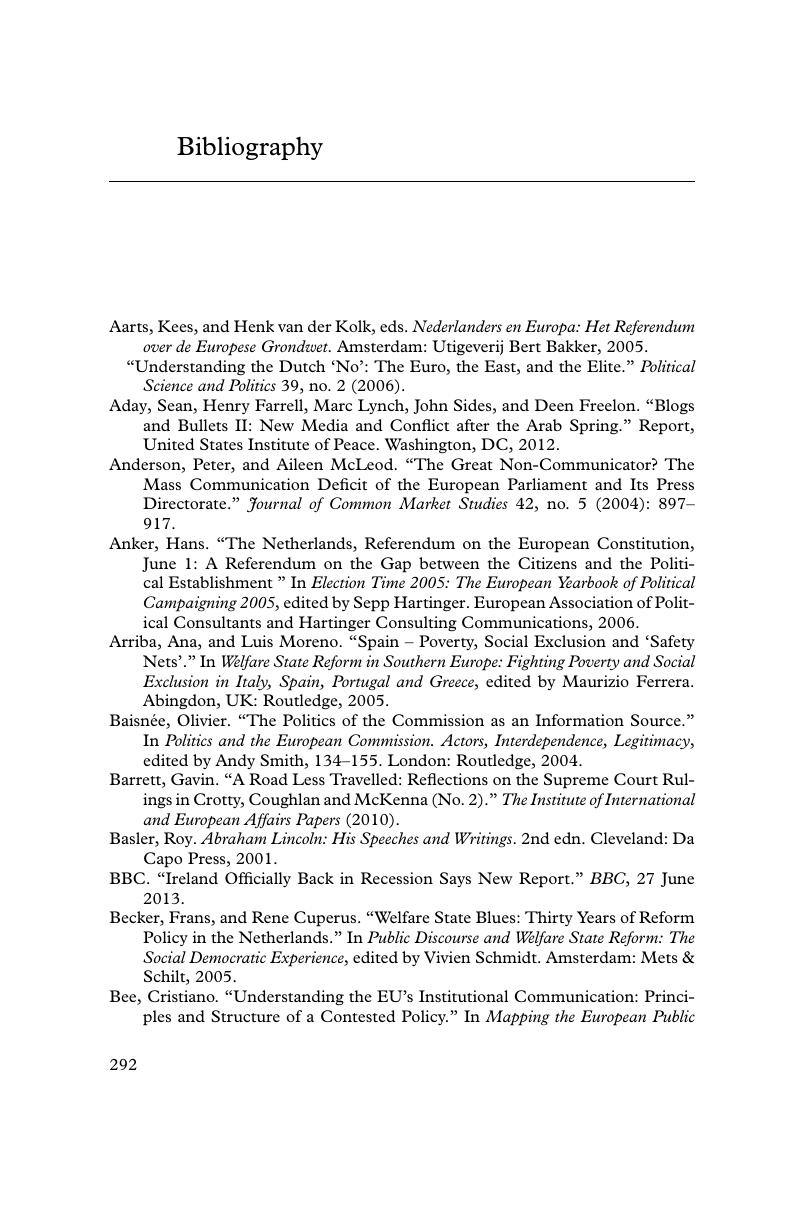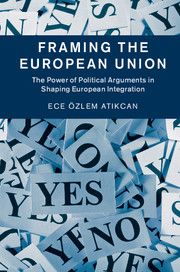Book contents
- Framing the European Union
- Framing the European Union
- Copyright page
- Dedication
- Contents
- Figures
- Tables
- Book part
- Glossary
- 1 The referendum conundrum
- 2 Diffusion channels
- 3 Spain: the quiet referendum
- 4 France: the momentum referendum
- 5 The Netherlands: the reversal referendum
- 6 Luxembourg: the diffusion referendum
- 7 Ireland: the double referendum
- 8 Through the eyes of the European Union
- 9 From champions to campaigners
- Bibliography
- Index
- References
Bibliography
Published online by Cambridge University Press: 05 October 2015
- Framing the European Union
- Framing the European Union
- Copyright page
- Dedication
- Contents
- Figures
- Tables
- Book part
- Glossary
- 1 The referendum conundrum
- 2 Diffusion channels
- 3 Spain: the quiet referendum
- 4 France: the momentum referendum
- 5 The Netherlands: the reversal referendum
- 6 Luxembourg: the diffusion referendum
- 7 Ireland: the double referendum
- 8 Through the eyes of the European Union
- 9 From champions to campaigners
- Bibliography
- Index
- References
Summary

- Type
- Chapter
- Information
- Framing the European UnionThe Power of Political Arguments in Shaping European Integration, pp. 292 - 308Publisher: Cambridge University PressPrint publication year: 2015



